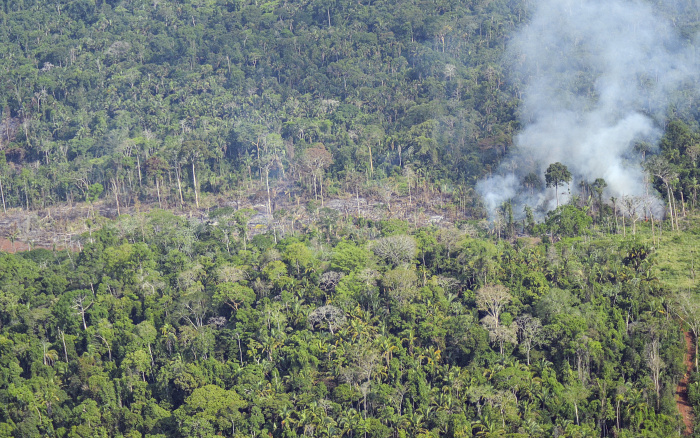Você está na versão anterior do website do ISA
Atenção
Essa é a versão antiga do site do ISA que ficou no ar até março de 2022. As informações institucionais aqui contidas podem estar desatualizadas. Acesse https://www.socioambiental.org para a versão atual.
Alert in Xingu! August Recorded Worst Deforestation Since 2018
Tuesday, 26 de October de 2021 
Esta notícia está associada ao Programa:
Over 28,000 hectares were destroyed in the region in a single month; Apyterewa Indigenous Land ranks among the most deforested
Destruction continues unabated in Xingu. Monitoring by Sirad X (the Rede Xingu+ monitoring system) for July and August warned of an accelerated increase in deforestation in the region, mainly in legally protected areas.
In August, 28,700 hectares were destroyed in the basin - the highest figure since January 2018, when Sirad X monitoring began. The two-month period saw a 39% increase compared to the same period last year.
As in the last three years, the greatest threats to the protected areas of Xingu continue to be illegal mining, land grabbing and timber theft. Deforestation in these territories grew by 53% compared to the same period in 2020.
The Apyterewa Indigenous Land, which has been subjected to the most deforestation in the three years of Sirad X monitoring, continues to suffer a growing wave of destruction. The TI has had 2,400 hectares deforested in the months of July and August. Homologated in 2007, it has been under a process of ‘disintrusion’ since 2011.
In the period between January and August of 2021, deforestation in Apyterewa more than doubled (123%). In addition to land grabbing, the Indigenous Land is also suffering from the strong advance of illegal mining. As an example of the certainty of impunity, Vila Renascer, an illegal settlement within the TI, operates freely with bars, churches, restaurants, and other illegal businesses on the territory.
“In addition to the environmental impact caused by forest clearing, the growing intensity of deforestation in the Apyterewa TI threatens the Parakanã people's livelihoods and increases pressure on the neighbouring TIs, Araweté Igarapé Ipixuna and Trincheira Bacajá, through invasions and the opening of illegal tracks [roads] originating from the Apyterewa TI”, says Thaise da Silva Rodrigues, geoprocessing analyst for Instituto Socioambiental (ISA) and researcher at the Rede Xingu+ De Olho No Xingu Observatory
The expectation that illegally grabbed lands will be regularised and the Federal Government’s boycotting of specialised environmental control agencies continue to heighten destruction in Xingu. The municipalities of Altamira and São Félix do Xingu are leaders of deforestation in the entire Legal Amazon, even with the actions of the Armed Forces' Operation Samaúma.
"Altamira and São Félix do Xingu are the municipalities that deforest the most in the Amazon and, consequently, also emit the most CO2, the main greenhouse gas, in the country", says Da Silva. “The increase in deforestation and forest conversion into other uses such as pasture is not only accelerating climate change but causing changes in rainfall regimes as well as conditions during the region’s dry season”, she adds.
The increase in deforestation of indigenous lands in the Xingu Basin grew by 79% compared to last year, partly due to Apyterewa. The Trincheira Bacajá TI came in second, with 1,000 hectares of deforestation recorded, a 54% leap over the same period last year. It is followed by the Kayapó TI, which is affected by illegal mining and has no permanent monitoring base in its territory. Between January and August, deforestation increased by 42% compared to the same period in 2020.
Conservation Units alone concentrate almost half of all deforestation in the basin (45%). Over 13,000 hectares were deforested in July and August, mainly in the Triunfo do Xingu Environmental Protection Area (APA).
The rampant invasion of the territory, together with rising deforestation in the APA, creates pressure on neighbouring territories and puts the connectivity of Xingu’s protected areas corridor at risk, which today is the last barrier protecting the Eastern Amazon from deforestation.
ISA
Imagens:



